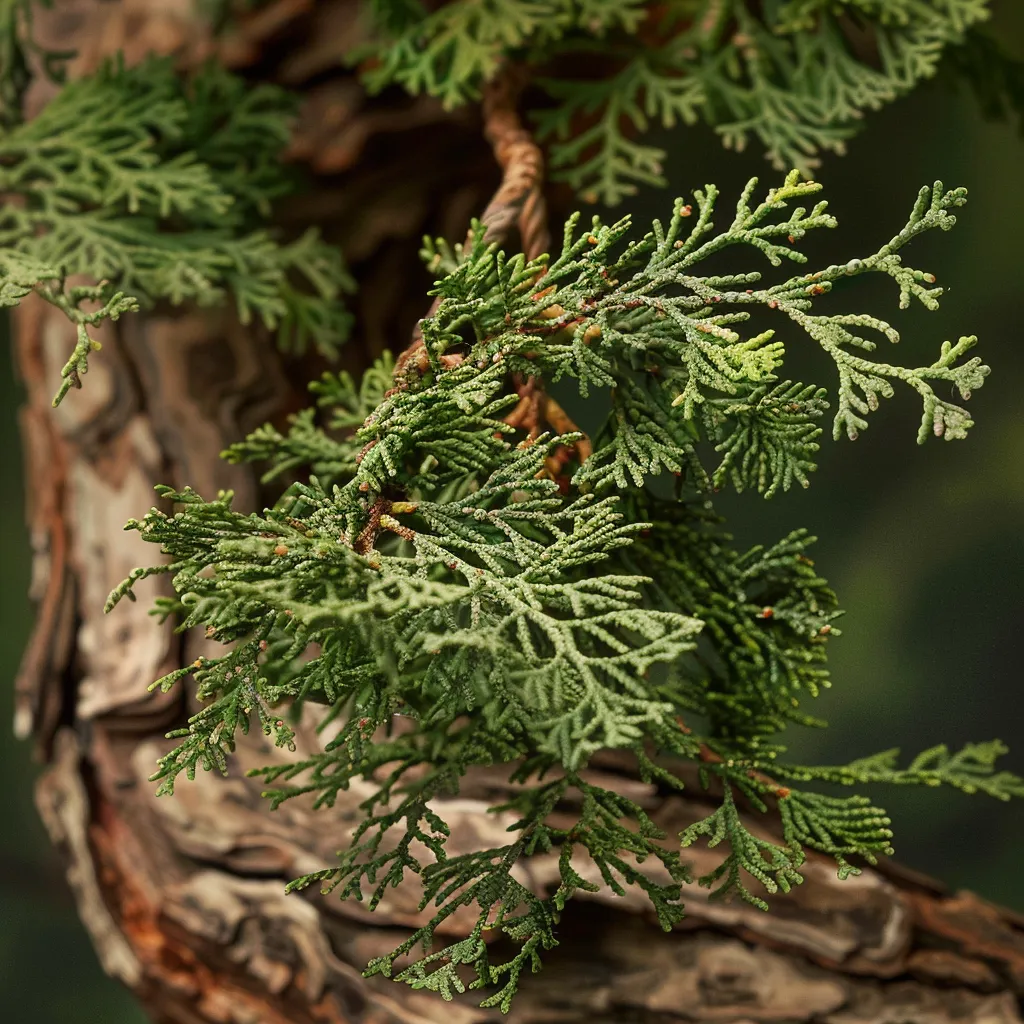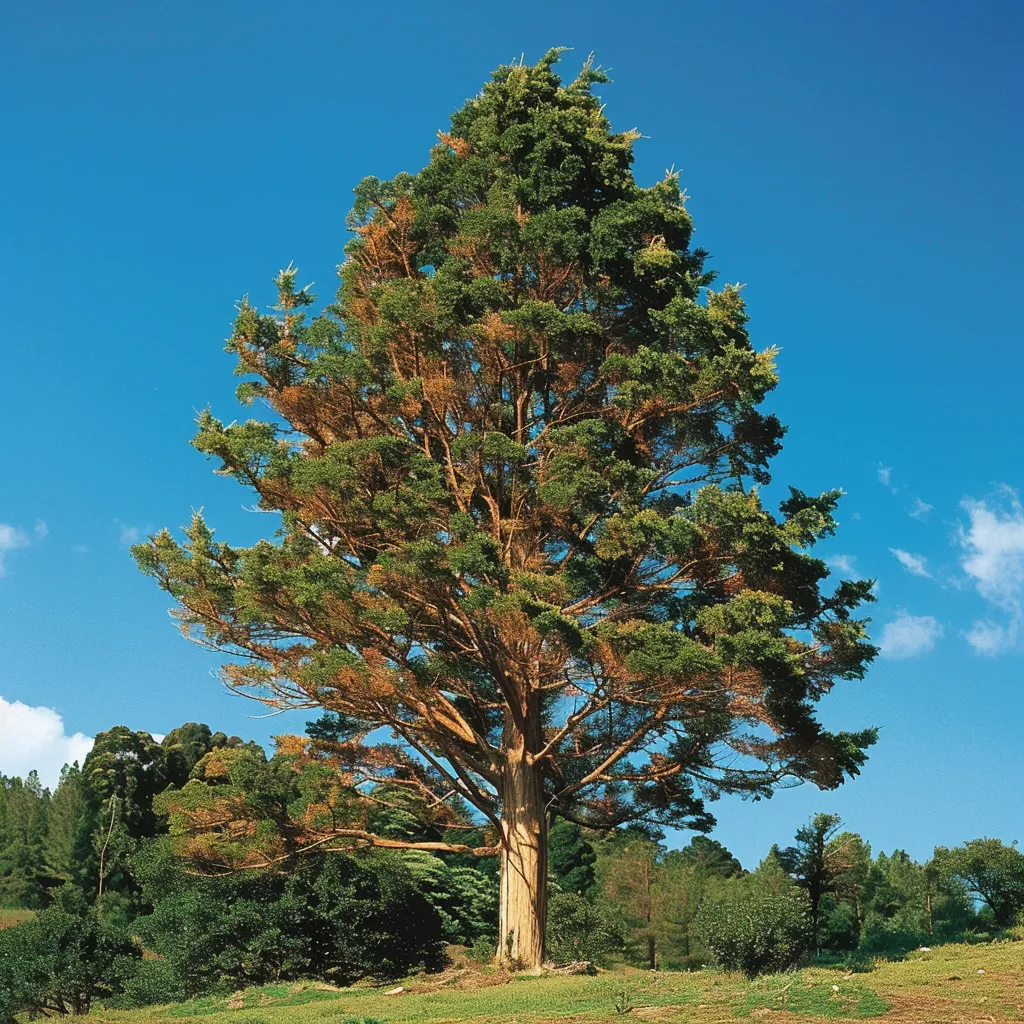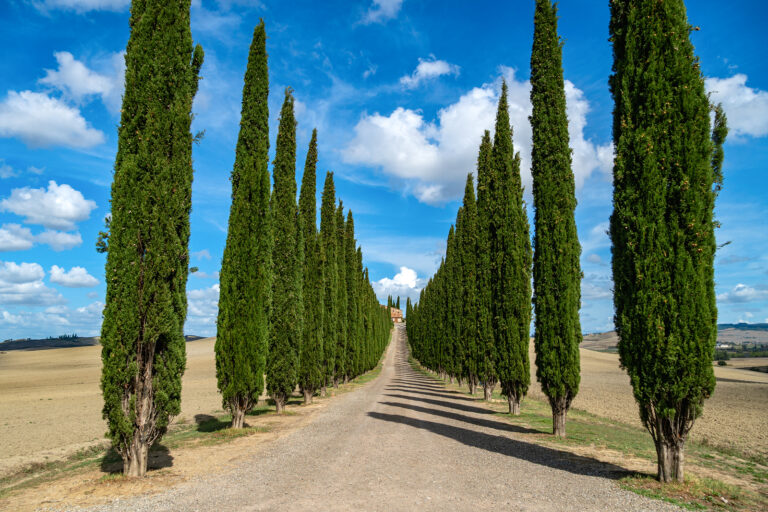How to Grow Libdocederus – Incense Cedar
Libocedrus, commonly referred to as incense cedar, is a genus of evergreen conifers with majestic, columnar growth and aromatic foliage. Notable for its attractive, deeply ridged bark and dense, feathery leaves, incense cedar (most often Libocedrus decurrens, though there are other species) is a beautiful addition to gardens with adequate space. Native to the mountainous regions of western North America, these trees are valued for their hardiness, adaptability to different soil types, and low maintenance needs.
Libocedrus trees can grow up to 60-100 feet tall in their native habitats, though they tend to be smaller in gardens, reaching around 30-50 feet with a spread of 10-15 feet. They have a narrow, upright form and are often planted for their rich green foliage, graceful habit, and visual interest throughout the year. Libocedrus species are known for their tolerance to a range of conditions, thriving in USDA zones 5 through 8, and are well-suited to both formal and naturalistic garden settings.

Where to Plant Libocedrus
Finding the right site is essential for healthy growth. Libocedrus trees are resilient but require specific conditions for optimal growth:
- Sunlight: Full sun to partial shade is ideal. While they can tolerate light shade, full sun enhances their color and compact growth.
- Soil: Libocedrus is adaptable to different soil types, including loamy, sandy, and clay soils. However, it grows best in well-draining, moderately fertile soils with a slightly acidic to neutral pH (6.0-7.0).
- Moisture: Incense cedars are drought-tolerant once established but benefit from consistent moisture in the early stages of growth. Avoid planting them in areas that are prone to waterlogging, as this can lead to root rot.
When to Plant Libocedrus
The ideal time to plant Libocedrus is in early spring or fall, when temperatures are moderate, and rainfall is generally higher. Planting during these seasons allows roots to establish before facing extreme summer heat or winter cold.

How to Plant Libocedrus Step-by-Step
- Prepare the Site: Clear any grass, weeds, or debris from the planting area. Dig a hole that’s about twice the width of the tree’s root ball and slightly shallower than its depth.
- Amend Soil (if necessary): While Libocedrus is adaptable, it benefits from the addition of compost to improve soil fertility and structure, especially in poor or sandy soils.
- Position the Tree: Place the tree in the center of the hole, ensuring the top of the root ball sits slightly above the soil line to promote proper drainage.
- Backfill: Refill the hole with the excavated soil, pressing down gently around the roots to eliminate air pockets. Water the area thoroughly to help the soil settle.
- Mulch: Add a 2-3 inch layer of organic mulch around the base of the tree, keeping it a few inches away from the trunk. Mulching helps retain moisture, suppress weeds, and regulate soil temperature.
How to Care for Libocedrus
Watering
Incense cedars are fairly drought-tolerant once mature, but they need regular watering in the initial stages:
- Young Trees: Water deeply once or twice per week during dry periods in the first couple of years. Make sure the water penetrates to the root zone.
- Mature Trees: Once established, Libocedrus needs only occasional watering, especially during prolonged dry spells. Water deeply once a month in drought conditions to keep the roots hydrated.
Fertilizing
These trees don’t require heavy feeding but can benefit from a light application of fertilizer in the early spring to encourage healthy growth.
- Application: Use a balanced, slow-release fertilizer (10-10-10) around the base of the tree. Avoid over-fertilizing, which can lead to weak, leggy growth.
- Timing: Apply fertilizer only once in early spring, as too much can cause excessive top growth at the expense of root health.
Pruning
Libocedrus has a naturally symmetrical form, needing minimal pruning. However, it can be lightly pruned for shape or to remove dead or damaged branches.
- Timing: Prune in late winter or early spring before new growth starts.
- Technique: Remove any dead, diseased, or damaged branches first. For shaping, prune lightly to maintain its natural form; avoid cutting into the old wood, as it can be slow to recover.
Pest and Disease Management
Libocedrus is generally resistant to pests and diseases, though it can be affected by a few issues:
- Bagworms: These can occasionally infest incense cedar foliage. Remove bags manually or use an organic pesticide if infestations are severe.
- Root Rot: In poorly drained soils, Libocedrus can develop root rot. Ensure proper drainage and avoid overwatering.
Maintaining good air circulation around the tree and proper mulching helps minimize disease risk.
How to Propagate Libocedrus
Libocedrus is best propagated by seeds, though cuttings can be challenging due to their slow rooting process.
- Seed Collection: Collect seeds from mature cones in late fall. Store them in a cool, dry place until ready to plant.
- Sowing: Sow seeds in a well-draining potting mix and place them in a cold frame to simulate natural winter conditions. Germination can be slow, so patience is needed.
Alternatively, nursery-grown saplings are a more reliable option for gardeners, as they establish quickly and require less maintenance in the early stages.
Using Libocedrus in Garden Design
Libocedrus is a versatile tree that can be used in various garden settings:
Specimen Tree
The narrow, upright growth habit and impressive height make Libocedrus an excellent choice as a focal point in lawns or along driveways. Its symmetrical form adds architectural interest and a touch of formality, ideal for both traditional and contemporary landscapes.
Windbreak or Privacy Screen
Libocedrus’s dense foliage and year-round greenery make it suitable as a windbreak or privacy screen. Plant several trees in a row with around 10-15 feet of spacing for an effective, natural barrier.
Woodland and Naturalistic Gardens
In a woodland setting, Libocedrus’s feathery, evergreen foliage complements deciduous trees, providing contrast and winter interest. Its drought tolerance makes it a good companion to other native trees, like oaks and pines, in xeric or low-water landscapes.
Japanese and Zen Gardens
Libocedrus’s refined, upright form and textured bark suit Japanese or Zen garden designs. Its form creates a sense of calm and structure, complementing traditional Japanese garden elements like rocks, gravel, and water features.
Urban Gardens and Large Containers
Due to its adaptability, incense cedar can thrive in urban settings with sufficient light and space. For smaller gardens, consider compact cultivars if available, or grow young Libocedrus in a large container to provide structure on patios and terraces.
Libocedrus Seasonal Interest and Year-Round Appeal
Libocedrus offers year-round interest with minimal maintenance. Its evergreen foliage provides a consistent background for seasonal flowers and shrubs, while the bark’s texture adds visual depth, especially in winter.
- Spring and Summer: Lush, dark green foliage provides shade and structure, forming a verdant backdrop for other garden plants.
- Fall: Foliage remains green, while the tree’s upright form contrasts well with the autumn colors of deciduous plants.
- Winter: The cinnamon-brown bark and evergreen needles provide much-needed color and texture in winter landscapes, standing out against snow or frost.
Benefits of Using Libocedrus in the Garden
Libocedrus offers several benefits that make it valuable in garden design:
- Drought Tolerance: Once established, incense cedar is well-suited to low-water landscapes, making it an excellent choice for xeriscaping or water-conscious gardening.
- Wildlife Habitat: The dense foliage provides shelter for birds and small mammals, while the aromatic wood may deter some pests.
- Privacy and Wind Protection: When planted in rows, Libocedrus serves as an effective screen, enhancing privacy and reducing wind exposure in open spaces.
- Low Maintenance: With minimal pruning needs and moderate watering requirements, Libocedrus is easy to care for and can thrive with little intervention.
Potential Challenges with Libocedrus
While Libocedrus is relatively easy to grow, there are a few challenges to consider:
- Space Requirements: These trees grow tall and wide, so they’re best suited for larger gardens. Ensure you have adequate space to accommodate its mature size.
- Slow Growth: Libocedrus is generally a slow grower, so it may take several years to reach its full potential as a screen or focal point.
- Sensitive to Poor Drainage: Avoid planting in waterlogged soils, as root rot can be a significant issue.
Recommended Varieties and Cultivars
There are few cultivars of incense cedar available, but most species, particularly Libocedrus decurrens, are well-suited for garden use. Some nurseries may offer cultivars selected for compact growth or specific climates.
Libocedrus Summary
Libocedrus, or incense cedar, is a hardy, adaptable conifer that brings year-round interest, structure, and beauty to the garden. Its versatility makes it valuable in various landscape designs, from formal gardens to naturalistic settings. With proper care and placement, Libocedrus can become a long-lasting, low-maintenance feature that enhances privacy, provides wildlife habitat, and adds a touch of elegance to outdoor spaces.







